Contents
- Intro – Why Japan for My First Overseas Purchase?
- The Price Gap – Sticker Shock at Home vs. Abroad
- Memories of Busan Port and the Ferry Ride
- Finding a “Reasonable Price” in Japan
- Lessons Learned from the Price Gap
- What I Learned from Customs Declaration(Korean regulations as an example)
- Looking Beyond the Price Tag
- A Small Experience, A Lasting Impact
Intro – Why Japan for My First Overseas Purchase?
When you first think about buying something overseas, it can feel overwhelming.
On the surface, it seems simple—just order online and wait. But once you dive in, unfamiliar words like international shipping, customs clearance, and foreign payment methodsstart popping up, and suddenly the process feels much more complicated.
I had the same doubts when I decided to make my very first overseas purchase.
In my case, I chose to buy an iPad Air directly from Japan. Looking back, it wasn’t just about getting a cheaper deal—it was about stepping into a whole new experience.
In this article, I’ll walk you through that journey step by step.
If you’re also considering buying something abroad, I hope my story can serve as a small guide and give you the confidence to take that first step.
1. The Price Gap – Sticker Shock at Home vs. Abroad
Back in February 2014, rumors were everywhere: “Electronics are much cheaper in Japan than in Korea.”
And it wasn’t just talk. The prices I saw in magazines and online communities were noticeably lower than what local stores in Korea were charging. For a student just returning to university after five years of military service, even a small difference of a few dollars felt significant. Every won mattered back then.
Whenever I looked at the price tags in Korean stores, my first thought was, “If I buy this here, I’ll need to tighten my belt for months.”
But hearing that the exact same product was selling in Japan for a far more reasonable price instantly caught my attention. The excitement of that discovery is something I still remember vividly.
Of course, it wasn’t just about chasing the cheapest deal. At that time, buying directly from overseas or using proxy shopping services wasn’t as common as it is today.
The more realistic option was simply to travel to Japan and bring it back myself. Naturally, the thought crossed my mind: “Why not just go and buy it there?”
2. Memories of Busan Port and the Ferry Ride
At around 3 p.m., I was waiting to board at the Busan Ferry Terminal.
While standing in line for departure inspection and the security checkpoint, I witnessed a scene that has stayed with me ever since. An elderly woman carrying bundles whispered, “If you just let this through the checkpoint, I’ll give you 3,000 yen.”
In that moment, I thought, “Wow, this really happens,”but I also felt a surge of nervousness—wondering if it might be something dangerous.
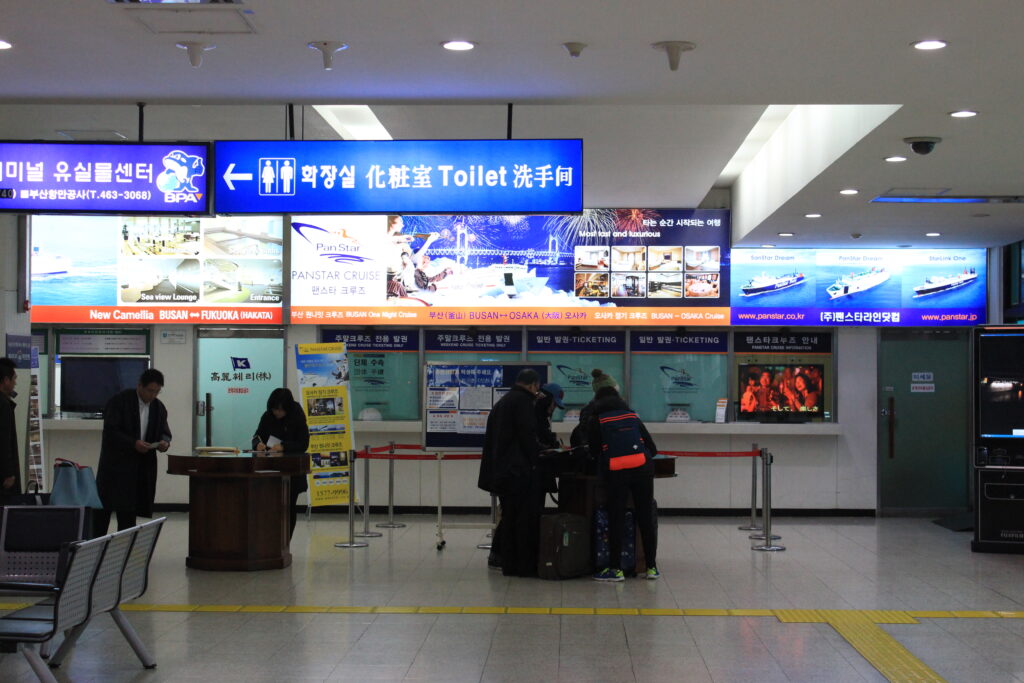
After completing the procedures, I finally boarded the ship. I had deliberately chosen the ferry instead of flying.
Plane tickets were too expensive for me at the time, but the ferry was much more affordable. Beyond cost, I wanted the experience itself—enjoying a party on deck, waking up early for a sauna in the ship’s public bath, and crossing the sea at a slower pace. Somehow, it felt like a more meaningful way to arrive in Japan.
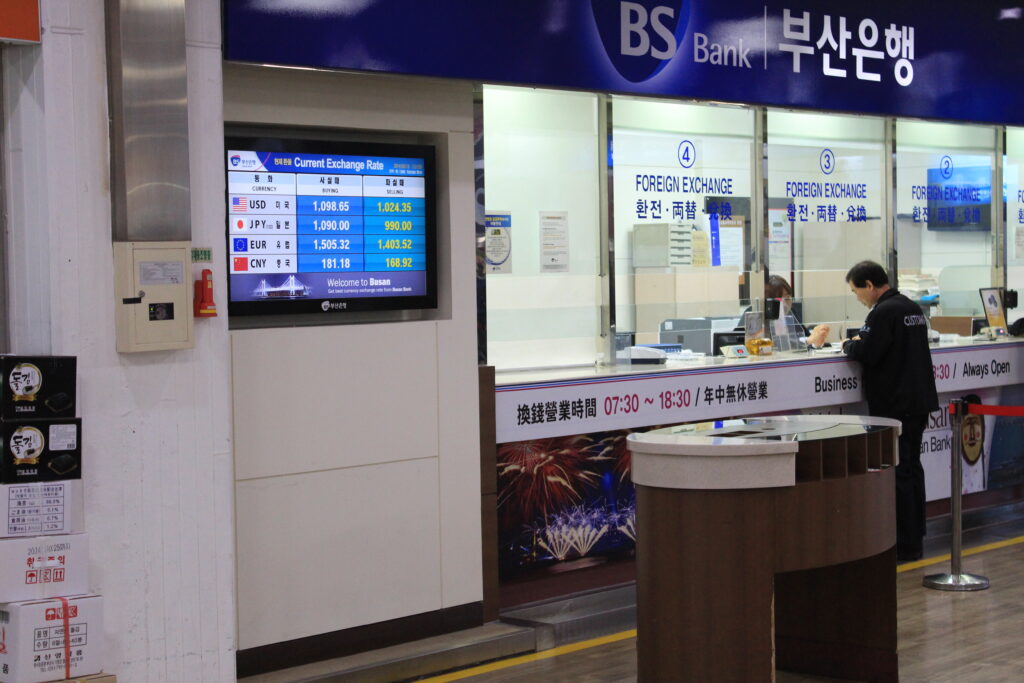
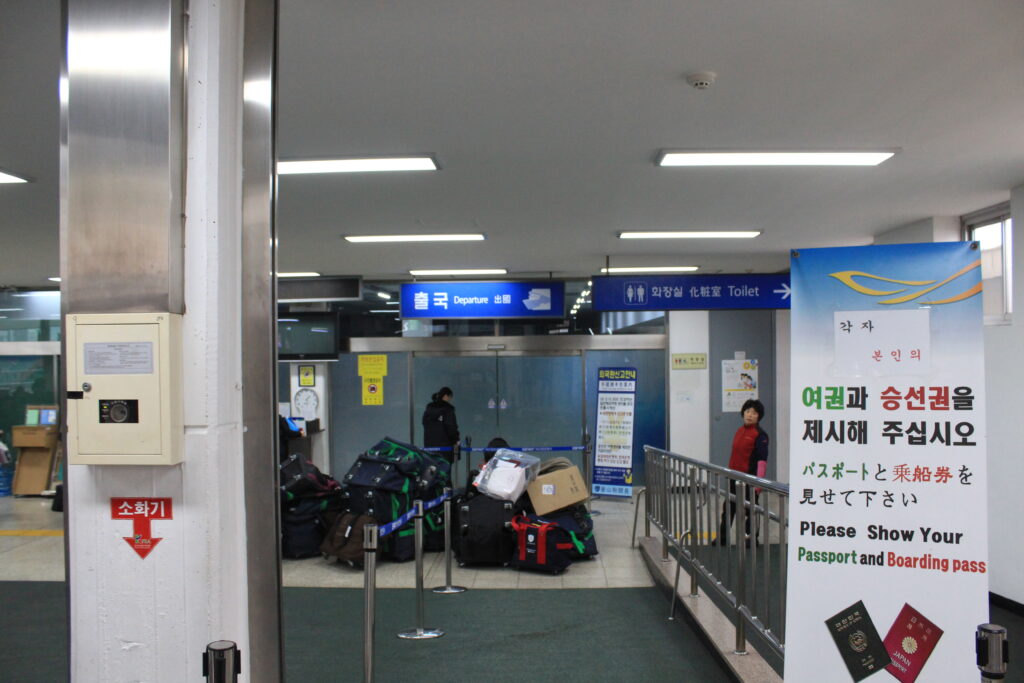
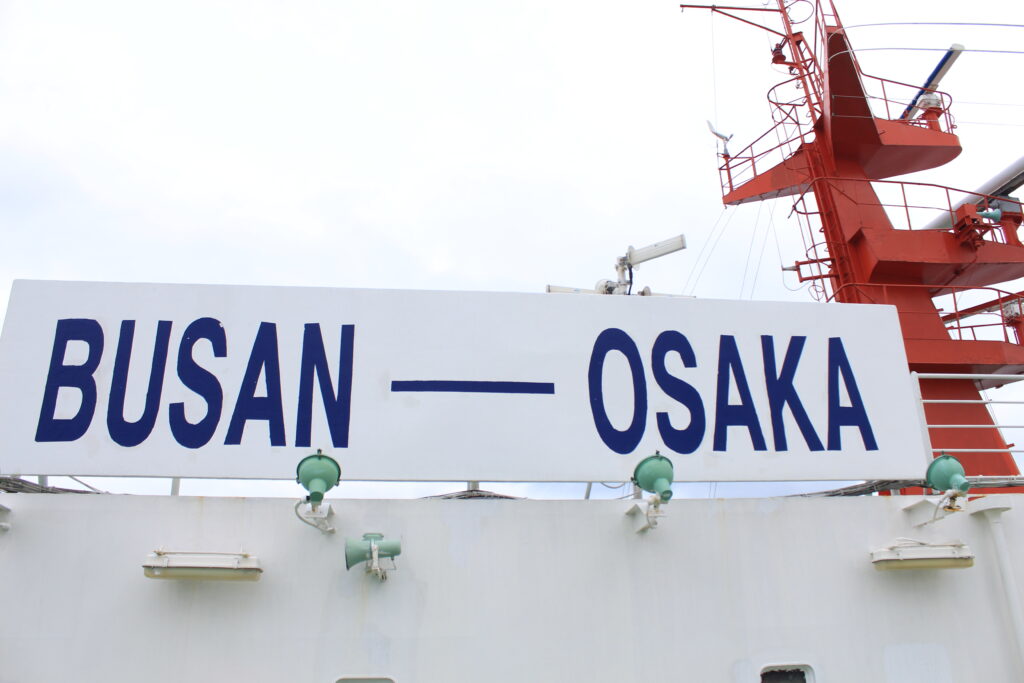
When the ferry left the coast and entered the open waters of the Korea Strait, an unforgettable moment arrived. Waves grew so strong that the entire vessel shook violently. Inside the cabin, it felt like being trapped in a massive amusement park ride. I battled seasickness, but at the same time, a strange realization hit me: “I really am in the middle of the ocean.”
The cabin itself was small and furnished with tatami mats—not exactly comfortable. But looking back, even those inconveniences became part of the memory.
Had I flown instead, I would have missed out on such an intense and vivid experience.
That’s why, the moment I set foot on Japanese soil, all my fatigue turned instantly into excitement.
3. Finding a “Reasonable Price” in Japan
After arriving in Osaka, the very first place I headed to was the “Y” electronics store in Umeda.
I had already marked it down before leaving Korea, and walking through its doors felt like stepping into the moment I had been waiting for.
The instant I saw the price tag for the iPad Air, my eyes widened.
In Korea, the same model was selling for around 650,000 won (roughly USD 600 at the time), but here in Japan, it was about 530,000 won.
That’s nearly a 100,000 won difference—more than enough to make a broke college student like me take notice.
I didn’t even have time to overthink it. My first thought was, “If I don’t buy this now, I’ll regret it forever.”
On top of that, I confirmed that Apple’s worldwide warrantyapplied, meaning I could still get service in Korea even if I bought the product abroad. With that reassurance, there was really no reason left to hesitate.
Looking back, it was almost an impulse purchase.
But what I took away wasn’t just the satisfaction of getting a good deal.
It was the realization that the exact same product can carry completely different price tags depending on the country.
That simple truth stayed in my mind long after I left the store.
. Lessons Learned from the Price Gap
That purchase wasn’t just about the joy of getting something cheaper in Japan.
It was the moment I realized that the price of a product is shaped by many factors—taxes, logistics, market conditions—and that these differences can make the exact same item cost more or less depending on where you buy it.
There was also a funny little episode that drove the point home.
A friend who traveled with me wanted to buy a Sony headset. At the store, the price tag was mistakenly set lower than the official retail price. The cashier noticed it, but still processed the payment based on the displayed price. Right after completing the transaction, the employee quietly switched the tag back to the correct price and smiled, saying:
“You lucky guy.”
We laughed at the scene, but for me, it carried a lesson.
In the marketplace, once a price is displayed, it’s not something that can be easily taken back.
For the buyer, it was an unexpected stroke of luck. For the seller, it must have been a costly mistake.
That day I learned that a price isn’t just a number on a tag—it’s a promise that carries trust.
5. What I Learned from Customs Declaration
On my way back to Korea, I’ll admit—I was a little nervous.
The iPad Air I bought seemed to exceed the duty-free allowance, or so I thought at the time.
When filling out the customs declaration form, I wrote down honestly: “1 iPad Air, approx. 530,000 KRW.”
Inside, I worried, “Will I have to pay extra taxes?”
But when I handed the form to the customs officer, nothing happened. They waved me through without a word.
Later, I learned why. In Korea, travelers are allowed to bring in personal goods valued up to USD 800 duty-free. Since my iPad fell within that limit and was clearly for personal use, there was no issue at all.
To give some context, here are a few examples of Korea’s duty-free limits:
- Alcohol: up to 1 liter (under USD 400 value)
- Cigarettes: up to 200 sticks
- Perfume: up to 60ml
You can even check this using the official Korean Customs Service tax calculator.
(Note: These regulations apply to Korea. Each country has its own customs rules and duty-free allowances, so always check the guidelines for your destination.)
In that moment, I felt my bag suddenly become lighter.
I realized that being honest on the form was perfectly fine, and it gave me peace of mind.
More importantly, I began to see customs declaration not as a process designed only to collect taxes, but as a way to build trust between the traveler and the country.
https://www.customs.go.kr/kcs/ad/tax/ItemTaxCalculation.do
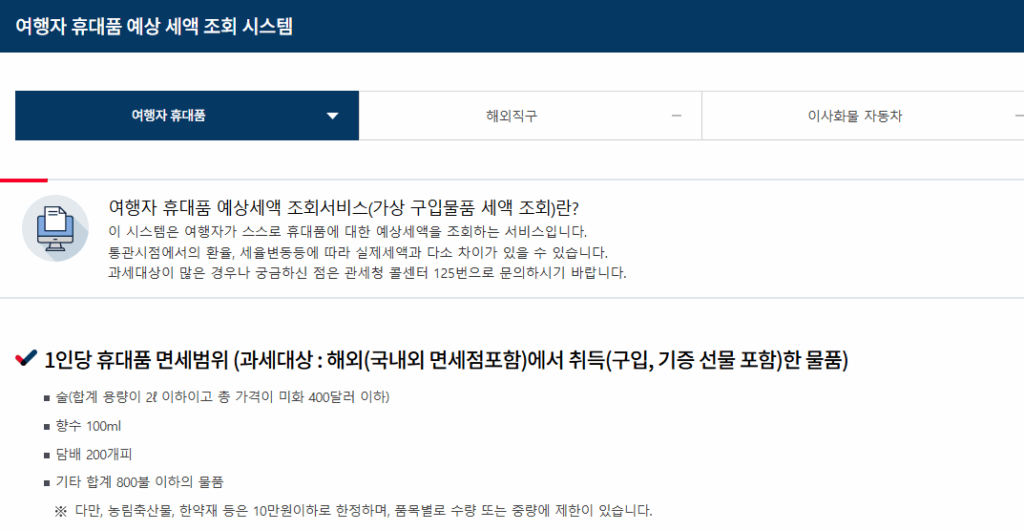
6. Looking Beyond the Price Tag
Looking back, the whole experience wasn’t just about the thrill of buying something cheaper in Japan.
It was a combination of moments—the excitement of getting the iPad at a lower price, the lessons learned during customs declaration, and even my friend’s little “headset incident.” Together, they changed the way I looked at the market.
I began to understand that every product carries a hidden story.
Prices can vary dramatically from country to country, and even small mistakes or unexpected events can instantly affect the trust between buyer and seller.
From that point on, I stopped seeing price tags as just numbers.
Instead, I found myself asking: “Where is this product more expensive, and where is it cheaper? And what does that say about the market itself?”
7. A Small Experience, A Lasting Impact
At the time, I was simply happy about saving money on an iPad.
But looking back, that “small” experience shaped the way I see the world today.
The realization that “the same product can have very different values depending on where you buy it”went far beyond price comparison.
It changed my perspective on markets, trust, and even decision-making in life.
That one choice—to buy an iPad in Japan—ended up steering my life in a new direction.
Even now, whenever I look at a price tag, I don’t just see a number.
I try to see the story behind it—the market forces, the opportunities, and the lessons hidden in plain sight.
Have you ever had a moment while traveling or shopping abroad when you thought,
“Wow, why is this so cheap here?”
Or maybe you’ve had a shopping experience you’ll never forget, just like I did.
I’d love to hear your stories—share them in the comments below so we can swap experiences together!